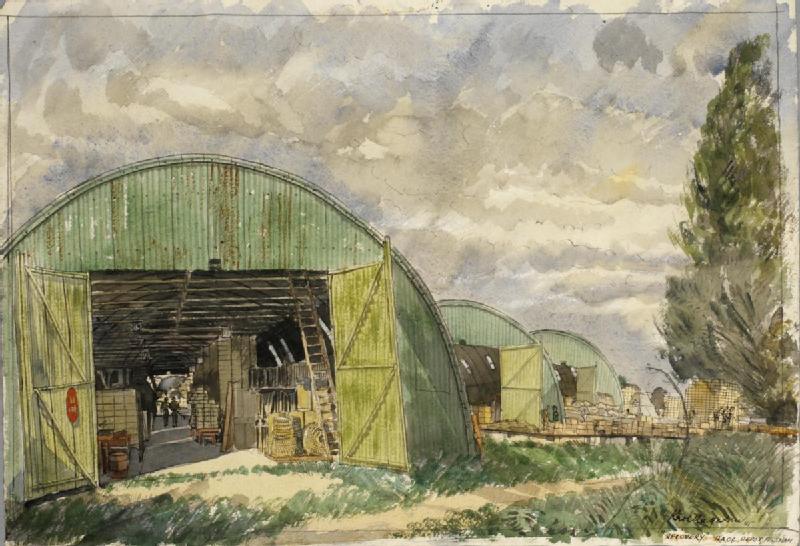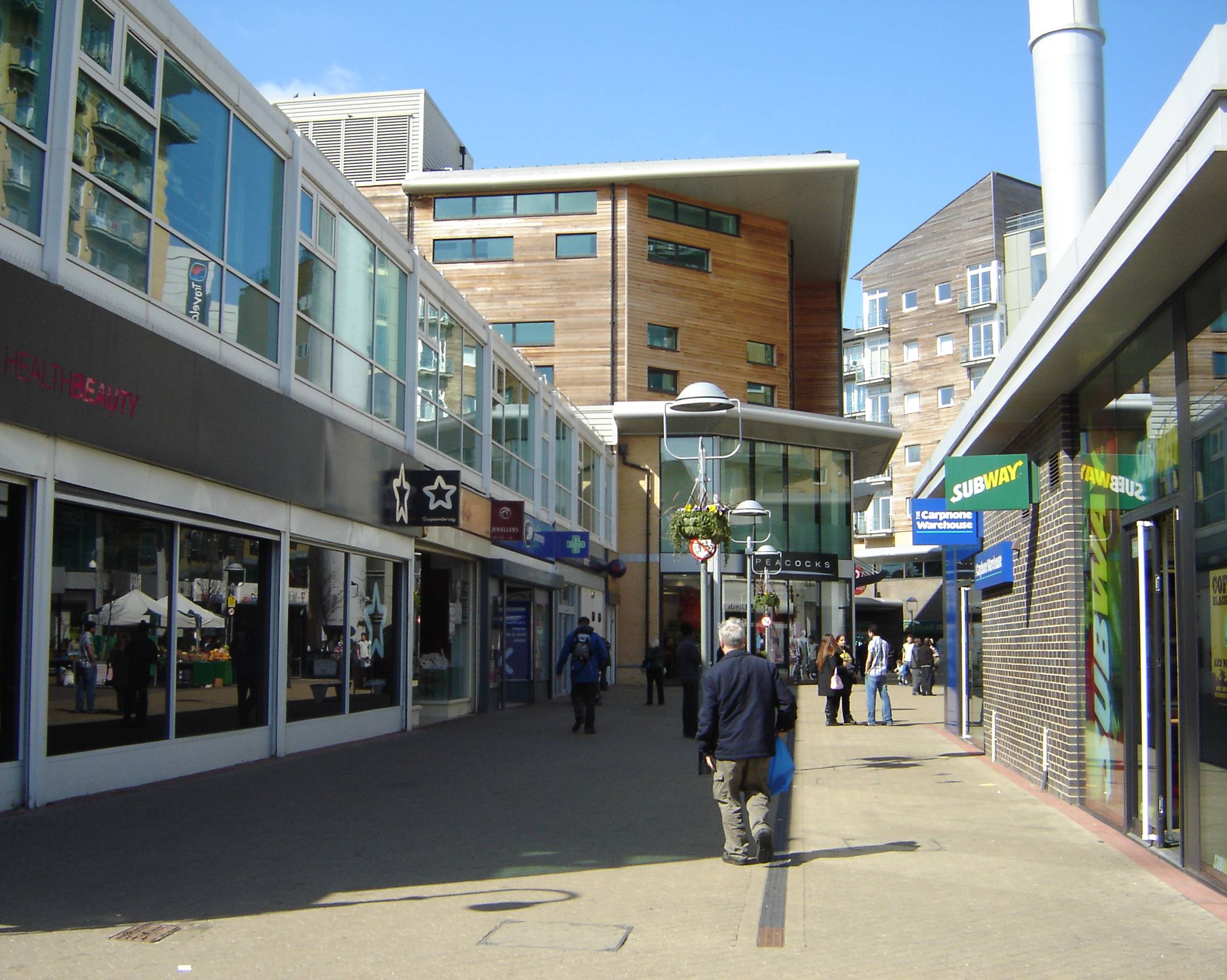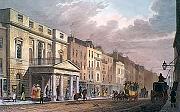|
MoD Feltham
MoD Feltham (formerly Feltham Barracks) is a secure military installation in Feltham, Middlesex. History This land was first acquired by the War Department during the First World War; by 1917 it was serving as an Air Acceptance Park with an aerodrome attached. After the war, in 1922, the Royal Army Service Corps (RASC) took over the site and buildings to serve as its Mechanical Transport Depot. The following year Feltham House, on the northern edge of the site, was purchased to serve as an officers' mess. (Believed to have been built in the 1770s for the Villebois family, the house (then known as Feltham Place) passed through several owners, serving for a time as a boys' school before being bought by 'Cabbage King' Alfred Smith in 1897.) It is a Grade II listed building with interiors designed or influenced by James Wyatt. It continued in use as an officer's mess through the 20th century (and was extended in the 1960s); however, as of 2018, it is unoccupied and has been placed ... [...More Info...] [...Related Items...] OR: [Wikipedia] [Google] [Baidu] |
Karl Hagedorn (1889–1969)
Karl Hagedorn (11 September 1889 – 1969), who signed himself Hagedorn, was a painter and illustrator. He was born in Berlin in 1889 but settled in Manchester, England, in 1905. Biography Hagedorn was educated in Berlin, and at Manchester School of Technology, Manchester School of Art, the Slade School of Fine Art, and in Paris, under Maurice Denis. Hagedorn became a leading figure in the Manchester art scene showing regularly at the Society of Modern Painters in the city, and also, from 1913 onwards, at the Royal Academy and the New English Art Club. He was naturalised as a British citizen in 1914, and served in the British Army during World War I. Hagedorn provided illustrations for the Empire Marketing Board, Shell and the ''Radio Times'' and also worked as a part-time art teacher at Epsom School of Art. He also taught at the Slade School of Fine Art. During World War II, he sold pictures of military subjects to the United Kingdom Government's War Artists' Advisory Co ... [...More Info...] [...Related Items...] OR: [Wikipedia] [Google] [Baidu] |
Barrack
Barracks are usually a group of long buildings built to house military personnel or laborers. The English word originates from the 17th century via French and Italian from an old Spanish word "barraca" ("soldier's tent"), but today barracks are usually permanent buildings for military accommodation. The word may apply to separate housing blocks or to complete complexes, and the plural form often refers to a single structure and may be singular in construction. The main object of barracks is to separate soldiers from the civilian population and reinforce discipline, training, and ''esprit de corps''. They have been called "discipline factories for soldiers". Like industrial factories, some are considered to be shoddy or dull buildings, although others are known for their magnificent architecture such as Collins Barracks in Dublin and others in Paris, Berlin, Madrid, Vienna, or London. From the rough barracks of 19th-century conscript armies, filled with hazing and illness and bare ... [...More Info...] [...Related Items...] OR: [Wikipedia] [Google] [Baidu] |
HUMINT
Human intelligence (abbreviated HUMINT and pronounced as ''hyoo-mint'') is intelligence gathered by means of interpersonal contact, as opposed to the more technical intelligence gathering disciplines such as signals intelligence (SIGINT), imagery intelligence (IMINT) and measurement and signature intelligence (MASINT). NATO defines HUMINT as "a category of intelligence derived from information collected and provided by human sources."AAP-6 (2004) - NATO Glossary of terms and definitions HUMINT, as the name suggests, is mostly done by people rather than any technical means, and is commonly provided by covert agents and spies. For instance, Oleg Penkovsky was a Soviet military intelligence ( GRU) colonel who served as a source to the UK and the United States by informing them of the precise knowledge necessary to address rapidly developing military tensions with the Soviet Union. A typical HUMINT activity consists of interrogations and conversations with persons having access t ... [...More Info...] [...Related Items...] OR: [Wikipedia] [Google] [Baidu] |
Defence Intelligence
Defence Intelligence (DI) is an organisation within the United Kingdom intelligence community which focuses on gathering and analysing military intelligence. It differs from the UK's intelligence agencies ( MI6, GCHQ and MI5) in that it is an integral part of a government department – the Ministry of Defence (MoD) – rather than a stand-alone organisation. The organisation employs a mixture of civilian and military staff and is funded within the UK's defence budget. The organisation was formerly known as the Defence Intelligence Staff (DIS), but changed its name in 2009. The primary role of Defence Intelligence is that of ' all-source' intelligence analysis. This discipline draws information from a variety of overt and covert sources to provide the intelligence needed to support military operations, contingency planning, and to inform defence policy and procurement decisions. The maintenance of the ability to give timely strategic warning of politico-military and scientific ... [...More Info...] [...Related Items...] OR: [Wikipedia] [Google] [Baidu] |
Royal Army Ordnance Corps
The Royal Army Ordnance Corps (RAOC) was a corps of the British Army. At its renaming as a Royal Corps in 1918 it was both a supply and repair corps. In the supply area it had responsibility for weapons, armoured vehicles and other military equipment, ammunition and clothing and certain minor functions such as laundry, mobile baths and photography. The RAOC was also responsible for a major element of the repair of Army equipment. In 1942 the latter function was transferred to the Royal Electrical and Mechanical Engineers (REME) and the vehicle storage and spares responsibilities of the Royal Army Service Corps were in turn passed over to the RAOC. The RAOC retained repair responsibilities for ammunition, clothing and certain ranges of general stores. In 1964 the McLeod Reorganisation of Army Logistics resulted in the RAOC absorbing petroleum, rations and accommodation stores functions from the Royal Army Service Corps as well as the Army Fire Service, barrack services, sponso ... [...More Info...] [...Related Items...] OR: [Wikipedia] [Google] [Baidu] |
Second World War
World War II or the Second World War, often abbreviated as WWII or WW2, was a world war that lasted from 1939 to 1945. It involved the World War II by country, vast majority of the world's countries—including all of the great powers—forming two opposing military alliances: the Allies of World War II, Allies and the Axis powers. World War II was a total war that directly involved more than 100 million Military personnel, personnel from more than 30 countries. The major participants in the war threw their entire economic, industrial, and scientific capabilities behind the war effort, blurring the distinction between civilian and military resources. Air warfare of World War II, Aircraft played a major role in the conflict, enabling the strategic bombing of population centres and deploying the Atomic bombings of Hiroshima and Nagasaki, only two nuclear weapons ever used in war. World War II was by far the List of wars by death toll, deadliest conflict in hu ... [...More Info...] [...Related Items...] OR: [Wikipedia] [Google] [Baidu] |
Playing Fields
A pitch or a sports ground is an outdoor playing area for various sports. The term ''pitch'' is most commonly used in British English, while the comparable term in American and Canadian English is playing field or sports field. For most sports the official term is field of play, although this is not regularly used by those outside refereeing/umpiring circles. The field of play generally includes out-of-bounds areas that a player is likely to enter while playing a match, such as the area beyond the touchlines in association football and rugby or the sidelines in American and Canadian football, or the "foul territory" in baseball. The surface of a pitch is most commonly composed of sod (grass), but may also be artificial turf, sand, clay, gravel, concrete, or other materials. A playing field on ice may be referred to as a ''rink'', for example an ice hockey rink, although ''rink'' may also refer to the entire building or, in the sport of curling, to either the building or a parti ... [...More Info...] [...Related Items...] OR: [Wikipedia] [Google] [Baidu] |
Heritage At Risk Register
An annual ''Heritage at Risk Register'' is published by Historic England. The survey is used by national and local government, a wide range of individuals and heritage groups to establish the extent of risk and to help assess priorities for action and funding decisions. This heritage-at-risk data is one of the UK government's official statistics. ''Heritage at risk'' is term for cultural heritage assets that are at risk as a result of neglect, decay, or inappropriate development; or are vulnerable to becoming so. England's ''Heritage at Risk Register'' The ''Heritage at Risk Register'' covers: * Grade I and II* listed buildings (the baseline register is 1999); Grade II listed buildings in London only (the baseline register is 1991) * Structural scheduled monuments (base year is 1999) and scheduled monuments (base year is 2009) * Registered parks and gardens (base year is 2009) * Registered historic battlefields (base year is 2008) * Protected wreck sites * Conservation areas ... [...More Info...] [...Related Items...] OR: [Wikipedia] [Google] [Baidu] |
Feltham
Feltham () is a town in West London, England, from Charing Cross. Historically part of Middlesex, it became part of the London Borough of Hounslow in 1965. The parliamentary constituency of Feltham and Heston has been held by Labour Party MPs since 1992. In 2011, the population of the combined census area of Feltham, Bedfont and Hanworth was 63,368. The economy of the town was largely agrarian until the early twentieth century, when it was transformed by the expansion of the London urban area. Most of the original High Street was demolished in the 1960s and 1970s. Further redevelopment in the early 2000s created the current shopping centre, which opened in 2006. Heathrow Airport is to the north west of the town and is a major centre of employment for local residents. Feltham railway station is on the Waterloo to Reading line, between Twickenham and Staines-upon-Thames. History Feltham formed an ancient parish in the Spelthorne hundred of Middlesex.Vision of Britain – ... [...More Info...] [...Related Items...] OR: [Wikipedia] [Google] [Baidu] |
James Wyatt
James Wyatt (3 August 1746 – 4 September 1813) was an English architect, a rival of Robert Adam in the neoclassical and neo-Gothic styles. He was elected to the Royal Academy in 1785 and was its president from 1805 to 1806. Early life Wyatt was born on 3 August 1746 at Weeford, near Lichfield, Staffordshire, England. Early classical career Wyatt spent six years in Italy, 1762–68, in company with Richard Bagot of Staffordshire, who was Secretary to the Earl of Northampton's embassy to the Venetian Republic. In Venice, Wyatt studied with Antonio Visentini (1688–1782) as an architectural draughtsman and painter. In Rome he made measured drawings of the dome of St. Peter's Basilica, "being under the necessity of lying on his back on a ladder slung horizontally, without cradle or side-rail, over a frightful void of 300 feet". Back in England, his selection as architect of the proposed Pantheon or "Winter Ranelagh" in Oxford Street, London, brought him almost unparalle ... [...More Info...] [...Related Items...] OR: [Wikipedia] [Google] [Baidu] |
Grade II Listed Building
In the United Kingdom, a listed building or listed structure is one that has been placed on one of the four statutory lists maintained by Historic England in England, Historic Environment Scotland in Scotland, in Wales, and the Northern Ireland Environment Agency in Northern Ireland. The term has also been used in the Republic of Ireland, where buildings are protected under the Planning and Development Act 2000. The statutory term in Ireland is "protected structure". A listed building may not be demolished, extended, or altered without special permission from the local planning authority, which typically consults the relevant central government agency, particularly for significant alterations to the more notable listed buildings. In England and Wales, a national amenity society must be notified of any work to a listed building which involves any element of demolition. Exemption from secular listed building control is provided for some buildings in current use for wors ... [...More Info...] [...Related Items...] OR: [Wikipedia] [Google] [Baidu] |





